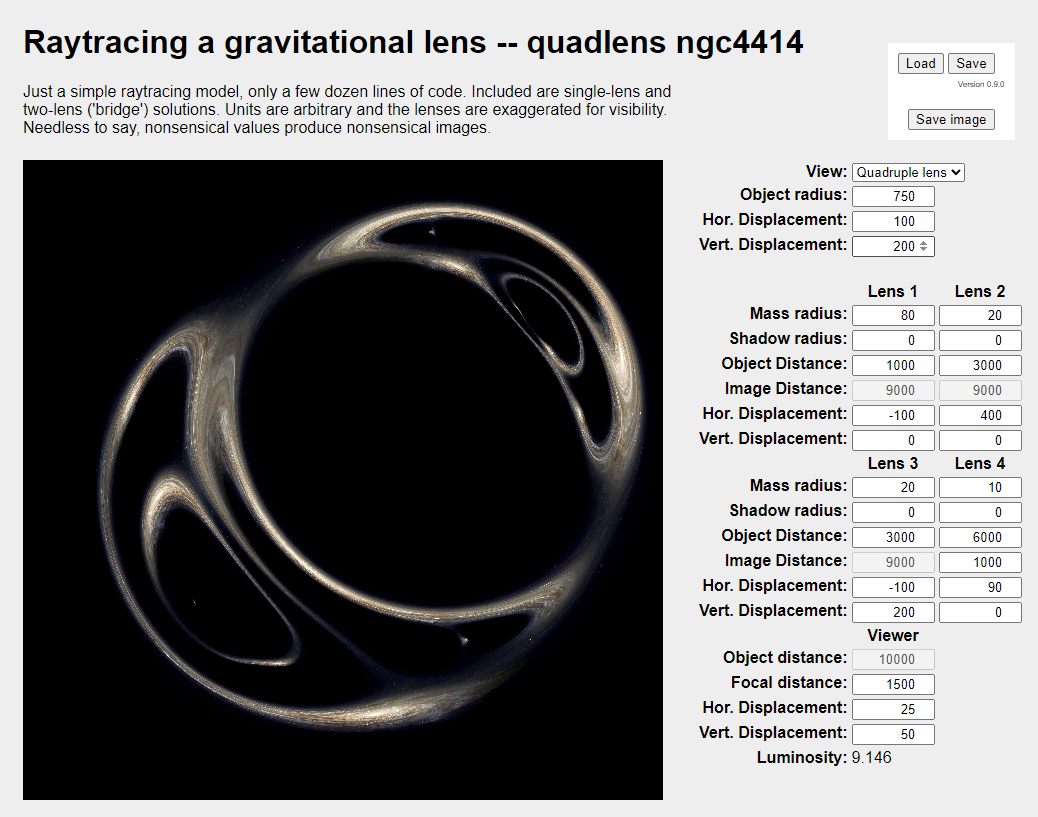The "bridge" project began as an attempt to demonstrate visually how two consecutive gravitational lenses amplify (or fail to amplify) light, forming what was proposed as a "communications bridge".

As a ray tracing implementation, it does not truly and accurately capture light intensity; however, it does show how consecutive lenses form multiple distorted images of the same source.
To give you an idea how to produce something that's beginning to look interesting, once the interface loads, select Lens bridge under View; once that loads, set the Hor. Displacement under Viewer (bottom of the parameter area) to 100.


